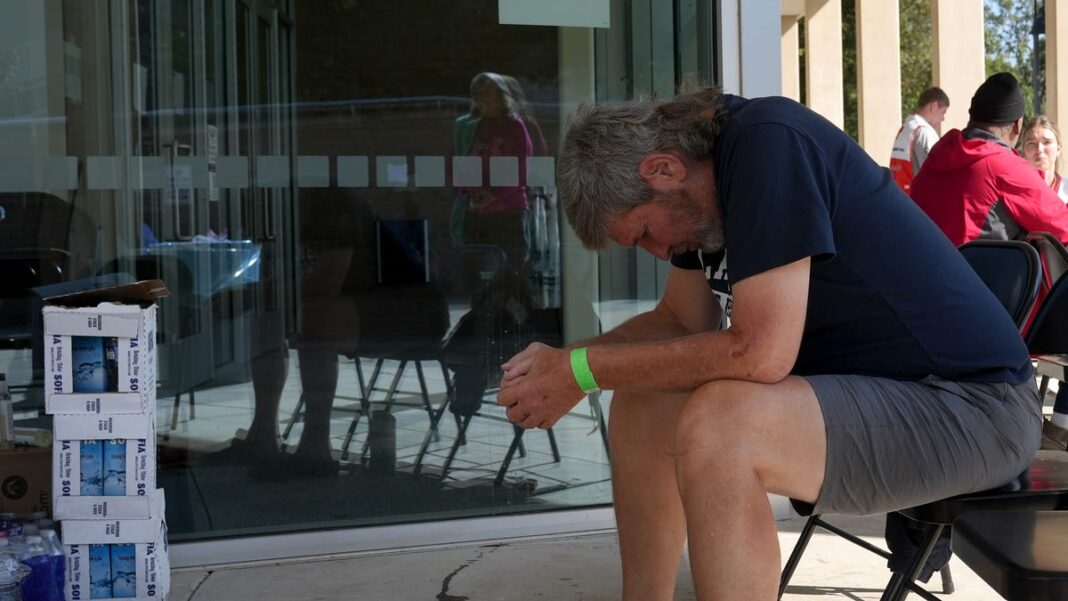Infections, sewage, and mosquito-borne illness linger after hurricanes
Since Hurricane Helene, providing clean water has been a major challenge at Asheville’s Mission Hospital, the sole trauma center in western North Carolina.
Facilities like Mission Hospital require safe drinking water for staff to sterilize tools, treat wounds, and maintain hygiene with soap. Other organizations, including Asheville’s Planned Parenthood clinic and local birthing centers, had to reduce vital health services due to the lack of running water.
The aftermath of the historic flooding in late September has left the local community confronting numerous public health issues, particularly the risk of exposure to sewage, hazardous industrial waste, and illnesses spread by mosquitoes.
Experts indicate that the primary concern in the area is the unavailability of safe drinking water. According to Dr. Daniel Kuritzkes, chief of infectious diseases at Brigham and Women’s Hospital in Boston, the absence of clean water restricts residents’ access to nutrition and sanitation, making them more susceptible to diseases and infections.
Hospitals are overwhelmed as they work to care for both new and existing patients, receiving truckloads of water and digging new wells.
“Patients may suffer from short-term injuries that could turn into long-term problems,” stated Marquita Lyons-Smith, director of North Carolina Central University’s nursing program, in an interview with YSL News. “This may happen because they didn’t receive timely care.”
Before the storm, many rural areas already dealt with hospital closures, making healthcare more inaccessible, she noted.
Contaminated water and rising infections
Every day, Mission Hospital receives over 30 trucks delivering more than 200,000 gallons of water, as reported by hospital spokesperson Nancy Lindell. The hospital is also contemplating drilling more wells to ensure its HVAC systems can keep the indoor environment comfortable.
The hospital and surrounding area are hindered due to damaged water pipes, with sewage and toxic substances polluting the water supply, threatening residents with intestinal diseases, fever, dehydration, and other health issues.
Additional health risks are present. Mold from floodwaters can grow, causing respiratory problems. Stagnant water creates ideal conditions for mosquito breeding, increasing the chances of dengue and West Nile virus transmission. Over the past year, both North and South America have reported high rates of dengue infections, raising alarm as warmer climates enable disease-bearing mosquitoes to spread to more regions in the U.S.
‘Just the beginning’
In addition to the risk of infectious diseases, North Carolina hospitals are also attending to injuries sustained during the storms.
This situation mirrors the challenges faced in central Florida after Hurricane Milton left residents dealing with injuries from flooding, strong winds, and tornadoes. With power outages experienced in both storm-hit areas, some turned to generators, which can lead to carbon monoxide poisoning in confined spaces.
Once the floodwaters recede, many individuals with chronic health conditions like heart disease and diabetes may see their situations worsen due to lack of access to medications or healthcare. The CDC reports that 60% of Americans have at least one chronic condition, with over 40% experiencing multiple conditions.
After storms, the number of fatalities can increase as people struggle to obtain necessary medications for conditions like high blood pressure or dialysis, warns Dr. Kuritzkes from Brigham and Women’s Hospital. Additionally, individuals with disabilities face significant challenges in seeking emergency assistance.
Following Hurricane Helene, over 230 people died, primarily in North Carolina, with another 17 fatalities attributed to Hurricane Milton in Florida.
“These statistics are heartbreaking, but they are relatively low,” stated Jeffrey Schlegelmilch, director of Columbia Climate School’s National Center for Disaster Preparedness, in a conversation with YSL News. “We must remember that these figures only scratch the surface of a larger issue.”
Warmer ocean waters caused by greenhouse gas emissions strengthen storms and allow them to transform into hurricanes more rapidly, leaving residents with less time to prepare or evacuate, similar to the scenarios witnessed during Helene and Milton.
Public health officials must develop quicker response strategies, even when hurricane or flood risks seem minimal or distant, advised Dr. Giridhar Mallya, a senior policy officer at the Robert Wood Johnson Foundation.
He emphasized that extreme weather events are becoming increasingly common. “Public health needs to be integrated into the planning and response frameworks.”

